An authentic British Scone is a perfect accompaniment to your warming cup of tea, particularly if you have some clotted cream and jam to serve it with!

What is a scone?
When you hear the word “scone” do you think of a fancy British tea-time spread? Or do you think of the sugar-dusted pastries in the Starbucks display case that you might be tempted to grab to go along with your morning coffee?
Authentic British scones aren’t eaten for breakfast. Rather, they are served with tea as a light snack for “cream tea” in the mid-morning or with afternoon tea. (Not to be confused with “high tea,” which includes more savory nibbles.)
British scones are small nibbles that are fairly plain on their own but are classically eaten with jam and clotted cream, making for a real treat.
Is a scone a biscuit?
When you first try an authentic British scone, you might be tempted to think of it as a biscuit. (Unless, of course, you’re from the southern US, where biscuit-making is an art. No real scone would fool a Southerner as a biscuit, that’s for sure.)
But, you can’t deny that the two are similar.
The basic ingredients for biscuits and scones really are the same: flour, leavening, a little salt, some fat, milk, and maybe a little sugar. The process too is similar: cut the fat into the dry ingredients, add the liquid, roll, and bake.
The difference comes down to a subtly in texture and how they are served.
British scones are denser, slightly drier, and more crumbly than biscuits. They typically contain much less butter than biscuits as well.
While biscuits most likely originated from the British scone, they have been transformed and now are the scone’s buttery cousin. Because of the extra butter, biscuits should be light and fluffy with tender layers.
While scones are spread with jam and clotted cream (which you can make yourself as oven clotted cream or as slow cooker clotted cream), biscuits more commonly find themselves in savory applications, like with sausage gravy or an egg and bacon.
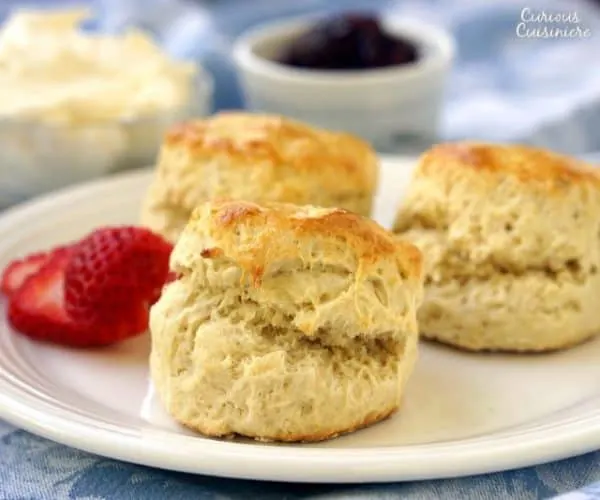
What is the difference between an American scone and a British scone?
If you walk into a coffee shop in the States, you’re bound to come face to face with some tasty treat labeled “scone”. It will probably be sweet, most likely filled with any number of sweet add-ins, and possibly even covered with a sugary glaze.
It might be biscuit-like in texture or it might be cakier, depending on the establishment. And, it probably will be about the size of your hand.
By now you know better.
These are not traditional British scones! They’re too big, too sweet, and too stand-alone. Not to mention all the flavor add-ins that are unheard of when it comes to a traditional scone. (Which might get some raisins tossed into the batter, but that’s about as crazy as things get.)
Besides, when was the last time you ventured to put jam on your American scone? (As if it needed the extra sugar.)
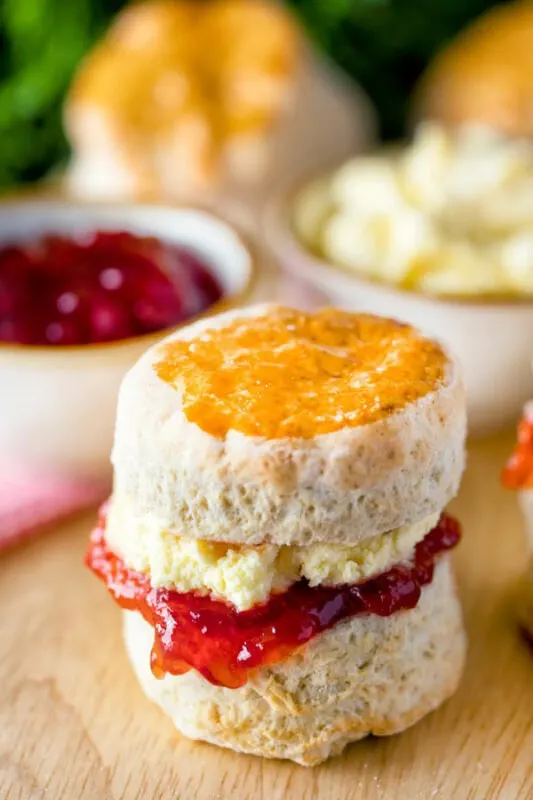
Ingredients and substitutions
Scone dough is made from simple ingredients that you probably keep your pantry stocked with. So, you can have a batch of scones turned out dangerously fast.
- Flour – Basic all-purpose flour is what we want here.
- Sugar – Just a little.
- Baking powder – You will use way more than you think you should for this amount of flour. That helps get the high rise.
- Salt
- Butter – Use slightly cold butter for best results.
- Milk – We prefer whole milk, but any will do.
- Egg wash
How to make English scones
All the differences aside, if you can make biscuits, then you can make scones.
To make them you first mix the dry ingredients. Then rub in the butter until it is evenly distributed and the consistency of the mixture is sandy. Then add the milk until you get a slightly sticky dough.
Once the dough comes together, you knead it just a couple times on the counter. Then you press it flat and cut out your scones.
Place them on your lined baking sheet, brush with egg wash, then they are ready for the oven!
The one difference we take between making biscuits and making scones is that for scones, we use our hands to massage the butter into the dry ingredients. Doing this creates a fine, sandy consistency that helps give the scones their classic texture. (For biscuits we cut the butter into the dry ingredients, which leaves larger chunks of butter in-tact, creating those tasty, buttery layers.)
How to store and reheat
British scones will keep well in an air-tight container on the counter for 2-3 days. If you plan to keep them longer than that, we recommend freezing them.
To reheat your scones, we recommend putting them in a low oven (300F) or toaster oven for 5-10 minutes.
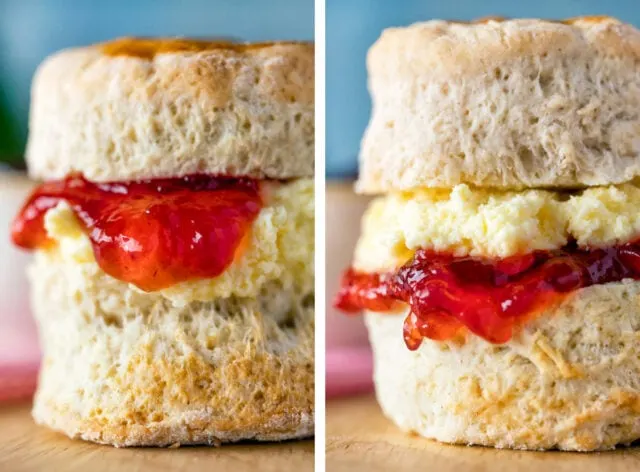
Can I freeze scones?
Yes! These work wonderfully frozen, either before or after baking.
To freeze the scone dough and bake it later, cut out your scones from the dough and then place the rounds of dough on a baking sheet. Place the whole sheet in the freezer and freeze until solid. Once the rounds are solid, you can remove them from the baking sheet and put them in an airtight container or sealable bag in the freezer until you are ready to bake them.
To bake from frozen, simply put the frozen rounds on a baking sheet and bake per the recipe instructions. You may find that you need to bake them for an extra 5 minutes or so, but keep an eye on them.
To freeze them after baking, let them cool completely before freezing in an airtight container. If you have a lot to freeze, we would recommend freezing them in a single layer first (like you did for the dough rounds) before transferring them to the long-term storage container.
From baked and frozen, simply let the scones thaw to room temperature before reheating.
These scones will stay good in the freezer for 3 months.
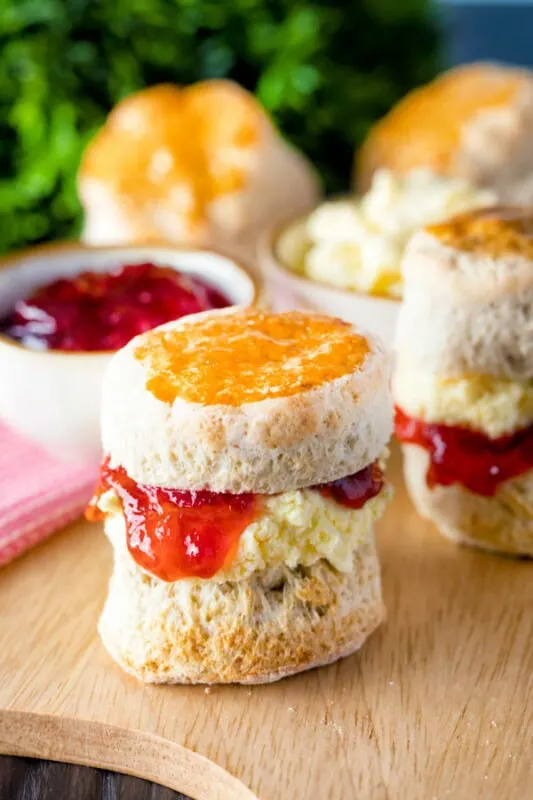
Why did my scones not rise?
If you didn’t get the lofty scones that you were hoping for there are a few things to check.
- Is your baking powder fresh? It should be less than 6 months old for best performance.
- Did you overwork the dough? Make sure you’re stirring and kneading it as little as possible to get it to come together.
- Did you twist the cutter? This is a big one. You need to press the cutter straight down and pull it straight up. If you twist the cutter, even a little, you will seal the edges and the rise will be less than optimal.
Why do my scones taste off?
Occasionally we have readers comment that their scones taste metallic or bitter. Here are some things to check:
- Double check that you used baking powder and not baking soda. It is an easy mistake to make!
- Did you use a US teaspoon measure or weigh your baking powder? Teaspoon measures in different countries are different sizes and in this case even a slight difference can make a big taste difference.)
- Did you mix your dry ingredients? It could also be that the baking powder didn’t get mixed in well enough.
- Are you sensitive to baking powder’s flavor? Some people are. If this is the case, you can dial back the baking powder in the recipe. You just may not get as high of a rise.
With the high amount of baking powder in the traditional scone recipe, seemingly little things can make a bit impact on the flavor!
Whether you call it a biscuit or a scone, these tasty treats are great for breakfast or for an afternoon nibble.
Just don’t forget the jam and clotted cream!
Authentic British Scones
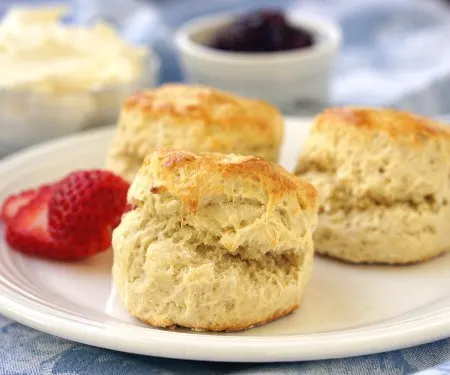
An authentic British Scone is the perfect accompaniment to your warming cup of tea, particularly if you have some clotted cream and jam to serve it with!
Ingredients
- 2 c (250 g) unbleached all-purpose flour
- 2 Tbsp (27 g) sugar
- 4 tsp (8 g) baking powder
- ½ tsp (2 g) salt
- 3 Tbsp (42 g) unsalted butter, cold
- ⅔ c (158 ml) milk
- 1 egg yolk beaten with 1 Tbsp milk, (to glaze)
- Strawberry jam, (to serve)
- Clotted cream, at room temerature (to serve)
Instructions
- Preheat your oven to 425F.
- In a medium bowl, mix the flour, sugar, baking powder, and salt until well combined.
- Add butter. Rub the mixture together with your fingers to break up the butter, until the mixture resembles fine breadcrumbs.
- Add the milk slowly, mixing as you add, using enough of the milk to get your dough to come together with no lumps remaining. (Your dough should be quite sticky. If a good consistency is not achieved with the listed amount of milk, continue adding until your dough reaches a good consistency.)
- Spoon the dough out until a well-floured surface. Generously dust the top of the dough and knead the dough 2-3 times to coat it with flour and smooth the surface. Press the dough into a round that is roughly 1 inch thick.
- Using a well-floured cookie cutter, cut the dough into 2 inch circles. (Be sure to press the cookie cutter straight down and up. Twisting the cookie cutter will impact the amount of rise you get on your scones.)
- Place the rounds onto a greased and floured baking sheet. Brush them gently with the egg yolk and milk mixture.
- Bake the scones for 12-15 minutes, until golden and firm.
- Remove the baked scones from the oven and let them cool for 30 minutes (if you can resist). If you like softer scones, cover them with a clean tea towel as they cool.
Notes
This scone batter freezes well. We like to freeze pre-cut rounds of dough for easy baking (just thaw and bake as directed).
Alternately, freeze the baked scones and reheat in a low oven for 5-10 minutes after thawing on the counter.
Want to convert to WEIGHT measurements? Have a look at our ingredient conversion guide.
Nutrition Information:
Yield:
10Serving Size:
1 sconeAmount Per Serving: Calories: 71
If you liked this recipe, here are some similar dishes you may enjoy!

Sarah founded Curious in 2010 as a way to save her recipe creations and share culinary experiences. Her love for cultural cuisines was instilled early by her French Canadian Grandmother. Her experience in the kitchen and in recipe development comes from over 10 years working in professional kitchens. She has traveled extensively and enjoys bringing the flavors of her travels back to create easy-to-make recipes.
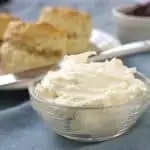


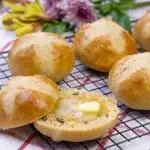
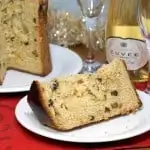
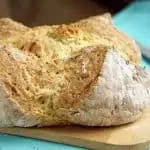
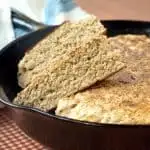
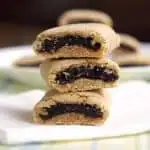
Yuriko
Friday 14th of February 2025
Mil gracias por sus recetas
Teresa
Saturday 2nd of November 2024
Question on the measurements; by my kitchen scale, 4 teaspoons of baking powder weighed 18 grams. Accounting for some discrepancy, that's about twice as much by weight as your recipe which calls for 8 grams. Is the 4 teaspoons correct?
Sarah - Curious Cuisiniere
Sunday 24th of November 2024
Thanks for asking Teresa. We are using US teaspoon measures and one teaspoon of our baking powder weighs roughly 2g. I would suggest using the gram measurements listed in the recipe. Enjoy!
Mapi
Sunday 6th of October 2024
Thank you Sarah, for your informative post and your tips and tricks: this recipe is simply perfect and brought me back to my youth, when I had tea in Cambridge, accompanied with scones, clotted cream and a luscious raspberry jam. I made clotted cream follwing your oven recipe and it was fantastic. Today was the turn of scones and they came out of the oven perfect, just the way I remembered them. Thanks again from Italy!
Sarah - Curious Cuisiniere
Saturday 12th of October 2024
Hi Mapi. We're so glad you enjoyed these and the clotted cream!
Kathy
Wednesday 25th of September 2024
I made these for company and they loved them. I added wild blueberries so they didn’t rise as much as they would have and sprinkled raw sugar on top to give them a nice little sweet crunch.
Sarah - Curious Cuisiniere
Thursday 26th of September 2024
So glad everyone enjoyed them! What a nice addition!
Michele
Sunday 4th of August 2024
I ate 2 waiting the 30 min. to have one with my tea!😳 great recipe, easy and delicious!😋
Sarah - Curious Cuisiniere
Monday 5th of August 2024
We're so glad you enjoyed them Michele!